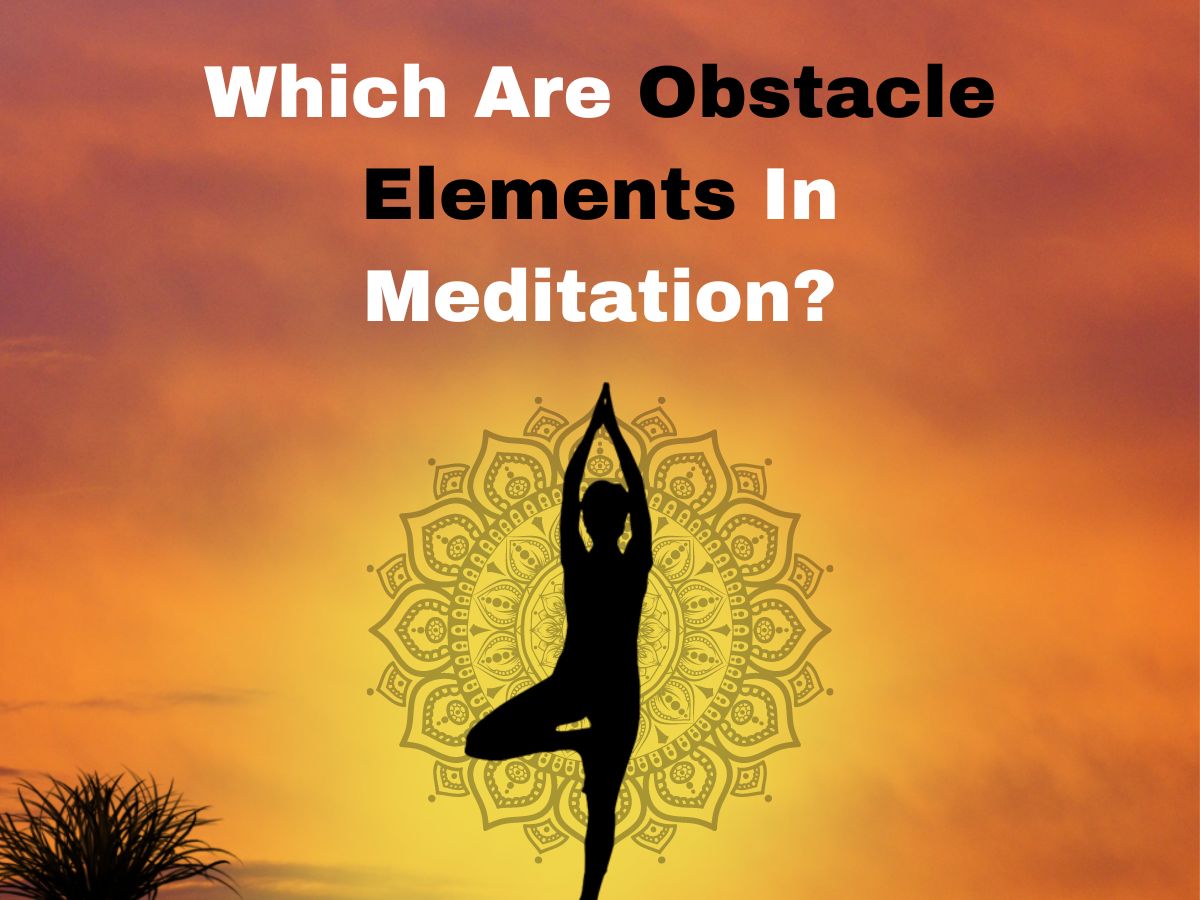Which Are Obstacle Elements In Meditation?

There are traditionally five impediments or barriers to meditation. Each of them has an antidote, a method for overcoming obstacles to return to the center of our meditation.
However, it is essential to keep in mind that there is no such thing as a good or terrible meditation and that sensations that may feel like difficulties might be a part of the meditation itself.
Everything we feel during meditation may be considered a component of the meditation itself. We might be captivated by the entirety of our experience, not just the portion we believe we are 'doing right.'
It also relates to the issue of choice. We frequently judge ourselves for unintended events, particularly our emotions. Nonetheless, we can choose how to react to our emotions with awareness.
Over the next few weeks, I will write about these obstacles, demonstrating how each may be overcome while also shedding light on our current situation. However, here is a summary and introduction to each so that we may begin to identify and differentiate them.
Here is a summary:
1. Craving and Desire
It is the sensation of wishing our meditation practice to be different. It may manifest as bodily hunger, especially if you meditate right before lunch! Alternatively, it might be a fantasy.
These might be highly alluring and delightful, but they can distract us from the present. In mindfulness practice, we spend a great deal of time considering how we respond to negative experiences.
However, observing what occurs when we enjoy something or desire it may be equally important. Be intrigued by how this sensation manifests in the body, and utilize this to inform your practice.
2. Animosity and Malice
Anger has a significant physical component, whereas ill will consists of the accompanying mental ideas and narrative.
If we can focus on bodily sensations without being unduly invested in the tale, we might be quite interested in how anger feels. Suddenly, we are meditating on rage!
3. Discomfort and Anxiety
Again, there are both physical and mental aspects to this. When we detect a bodily want to move, discomfort, or even an itch, we might consider if we need to move or whether we can observe the sensations with love and curiosity.
What happens in terms of anxiety when we permit ourselves to feel nervous rather than criticize ourselves? Many individuals begin meditating in search of serenity and relaxation, concerned that they are doing something incorrectly if they do not accomplish these goals.
Anxiety is a common human sensation and is not indicative of a mistake. The decision lies in the manner of response.
4. Laziness and Slumber
Lack of physical and emotional vitality — sloth and torpor – may be tough to work with. It may serve as a helpful reminder to get more sleep or meditate at a different time. Fatigue is inescapable for many of us; thus, it presents another chance to exercise patience and self-kindness.
5. Doubt and Uncertainty
Sadly, we are not always highly integrated. We may decide to meditate, yet a portion of us would rather be watching television, sleeping, or making our to-do list.
Instead of giving in, observe where your mind leads you and continue your exercise. It does not matter what occurs during your meditation, as long as you continue!
Mindfulness Practice: Breath Meditation
If you're new to meditation, we'd like to give you some general advice on body posture and other physical elements of practice. You can sit, lie down if you can stay awake, or stand.
In every posture, maintain head, neck, and body alignment. Rather than leaning back against a chair, strive for a self-supporting posture while seated, and make sure your legs can rest comfortably without requiring muscle effort to maintain them in place.
Find a spot where your hands can rest. Look for a position that is neither too tight nor too loose, where you can be comfortable and aware for the entire session. Feel free to keep your eyes closed or half-open, whichever is most comfortable.
If you keep your eyes half-open, you should direct your look within, on whatever you're concentrating on, rather than outward, where you may become disoriented by what you're seeing. If you begin to feel drowsy, you may wish to open your eyes or stand up.
The breath is a good focal point for practicing mindfulness. Your breath is always present and constantly in motion. It is also accessible at all times and in all places.
Allow ten to fifteen minutes for this exercise. Start by focusing on the breath in your nose or abdomen, depending on where you feel it most vividly. As you inhale, be conscious of breathing in, and as you exhale, be conscious of breathing out.
Allow the breath to come and depart properly and normally. Be present for the full duration of the in-breath and the full duration of the out-breath by focusing on the sensation of the in-and-out breath, allowing oneself to be.
There is no requirement to envision anything or manage the breath. There is no need to engage any ideas, words, or expressions. Be attentive to your inhalations and exhalations without judgment or effort. Observe the breath ebbing and flowing like ocean waves.
Recognize the inevitable lapses in concentration that will occur. When this occurs, refrain from criticizing or berating oneself.
Acknowledge where you have traveled, whether into the past or the future, or engage in some form of evaluation. Please return to the breath repeatedly each time you leave it.
There is nothing to achieve, nothing to seek, and nothing to do other than sit still and observe your breathing. Living your life with each inhale and expiration.
After this meditation, please express gratitude and congratulate yourself for giving yourself the gift of awareness.
The Finndit will provide you with all the information on fitness services like Yoga, Gym, Power zumba, cardio, weight lifting, and many more options like these. Begin your fitness journey Now.
